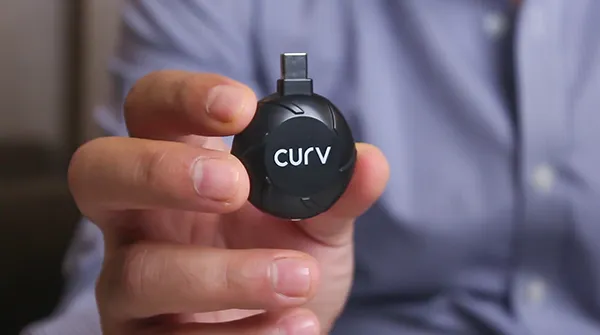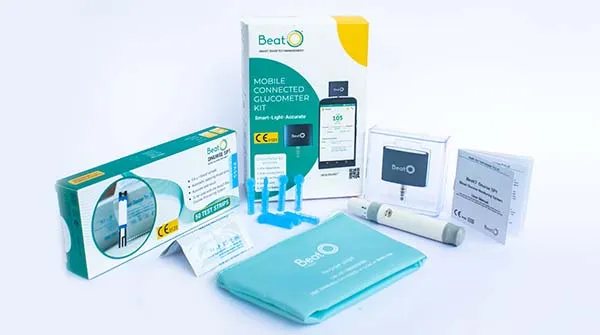Glucometers are an imperative tool in the lives of diabetics. Whether you are a Type-1 diabetic or Type-2 diabetic, it is essential to have a blood sugar testing machine that helps you monitor sugar levels time and again. However, the process of someone who has recently been diagnosed with diabetes might find it overwhelming how to use a glucometer and how to get accurate results, etc.

Before we talk about the right ways to use it, let us understand what a glucometer is!
What is a Glucometer?
A glucometer, also known as a glucose meter, is a device that helps monitor your blood sugar by using a single drop of blood. Mostly compact and portable, the device provides readings by detecting sugar levels in the body with the help of a test strip. The blood, when it comes in contact with the chemicals in the strip, gives out electrical currents which read out the level of glucose in the sample and provide numerical results in seconds.

Who should use a Glucometer?
A glucometer is advisable for anyone with high sugar levels. Anyone with Type 1 diabetes, Type 2 diabetes, gestational diabetes (diabetes during pregnancy), or latent autoimmune diabetes in adults (LADA) must include regular testing of blood sugar as part of their diabetes treatment.
Buy Now: BeatO CURV Glucometer
Why should one use a Glucometer?
Glucometers help in monitoring blood sugar and help in the following ways:
- Check on the controlled blood sugar to know whether it’s high or low.
- Assess the patterns regularly to check for an increase or decrease in glucose.
- Understand the responses of various activities, including exercise, to glucose levels.
- Monitor the effects of diabetes medications and other therapies.
- Assess your diabetes treatment goals.
When to test?
Doctors and diabetes educators advise you to test pre and post-meals, especially when you know your sugar levels are unusually high. The frequency of assessing your sugar levels depends on the type of diabetes you have.
Type 1 Diabetes
In the case of Type-1 diabetes, one might have to check his or her sugar levels four to ten times a day. This can range throughout the day; before taking your meals, after having your meals, after exercising, before sleeping, etc. Since the sugar levels of a Type-1 diabetic fluctuate frequently due to the body’s inability to produce insulin, it is important to test your blood sugar regularly.
Type 2 Diabetes
People with Type 2 Diabetes might have to check their blood sugar levels 2-4 times a day depending on their pre-existing body conditions. Furthermore, additional insulin intake also plays a pivotal role in the number of times one assesses blood sugar. In general, the preferred timings are before and after meals, exercise, and before bedtime.

How to Use a Glucometer?
Now that we have set the context of using a glucometer and its importance in the lives of diabetics, here are a few steps to follow when using the sugar testing machine:
Before starting, ensure you have everything set out, including your glucometer, test strip, lancing device, lancet, and alcohol pad. The testing phase is divided into five phases:
- Preparing the lancet device
- Cleaning your hands before the sugar level test
- Preparing the glucometer and test strips
- Blood sampling and measurement of glucose tests
- Disposing of used lancets and test strips
Measuring blood glucose levels anytime, anywhere is now possible with BeatO’s CURV smartphone Connected Glucometer. With this mobile-based glucometer, you can effortlessly take sugar readings, sync with the BeatO app, and maintain a log of all your previous readings to understand the pattern of your sugar levels.
1. Preparing the lancet device
- Twist and remove the internal cap of the lancing device. This will open up the mounting part for lancet insertion.
- Hold the lancet from the circular tip. Then, insert it completely into the mounting part.
- Slowly rotate the protective circular cover of the lancet tip and make it ready for use.
- Re-attach the internal cap over the mounting part.
- The depth of the blood sample is between 1-5 where level 5 is the deepest penetration. Select the number depending on the skin type.
- Hold the lancing device by clasping the adjustable tip in one hand and pulling on the sliding barrel. Do it till you feel a click.
- This action would make the release button of the lancing device ready to puncture the test site for blood.
2. Cleaning the device before the sugar level test
- Wash your hands thoroughly. Use an alcohol swab in a case where you can’t wash your hands or are outdoors.
- Ensure your hands are completely dry by dabbing your fingers in a towel and removing all the moisture.
- Rub your palms swiftly to warm up the blood in your fingers.
3. Preparing glucometer and test strips
- Insert a glucometer strip with the contact bar side facing upwards into the meter’s test strip port.
- Wait for the meter to detect the strip.
- When the glucometer indicates that it is ready for use, follow the steps to take the blood sample.
4. Blood sampling and measurement of glucose test
- Place the prepared lancing device against your finger’s pad.
- To puncture the finger, hit the loaded trigger button when you’re ready. If you’re a beginner, you’ll experience some slight discomfort.
- Remove the gadget from your finger and wait for a little blood drop to form.
- Apply the blood sample to the narrow end of the test strip that has been placed inside the glucometer.
- Ensure that you continue to apply blood samples until the confirmation window is filled.
- In under 5 seconds, the glucometer will generate the most accurate results.
- The BeatO App will store the results so that you can monitor, analyse, and manage your diabetes effectively.
- It’s important to keep track of your results since they’ll help you and your doctor figure out what’s going on with your blood sugar levels.
5. Blood sampling and measurement of glucose test
- Clear the blood sample from the fingertip with clean cotton after the glucose test.
- Remove the internal cap of the lancing device, which opens up the mounting section where the lancet is inserted, by rotating and removing it.
- Remove the circular protective cover you removed earlier and slide the lancet into it from the needle end.
- To remove the lancet, hold the lancing device once more.
- Slide the release button to remove the affixed lancet once the device is cocked.
- Gather the used lancet and Cool Test Strip and place them in the trash.
We hope that all of the information provided here will make it easier to use your Glucometer. Get in touch with diabetes experts for free.
Author – Shahana Khatoon
Disclaimer :
It is crucial to monitor your blood sugar levels using a smartphone-connected glucometer on a regular basis. If you feel doubtful about whether or not you should consume a particular item, you should do a quick sugar check before and after you consume it.
Being a person with diabetes, you can enjoy your favourite treats by making sure that you keep the portion size in check. Overindulging can lead to a spike in your sugar levels. It’s important to discuss with your physician how a food item can affect your blood glucose levels. If you have any doubts about what you can include as a part of your diabetes diet, you should always speak to your doctor or health coach.
Get the best health advice with BeatO!
Disclaimer:The content of this article is compiled information from generic and public sources. It is in no way a substitute, suggestion, or advice for a qualified medical opinion. Always consult a specialist or your own doctor for more information. BeatoApp does not claim responsibility for this information
The rightsugar testing stripand glucometer are hard to find. BeatO has got everything you need under one roof. Try out our smartglucometerkit and elevate your healthcare routine.





